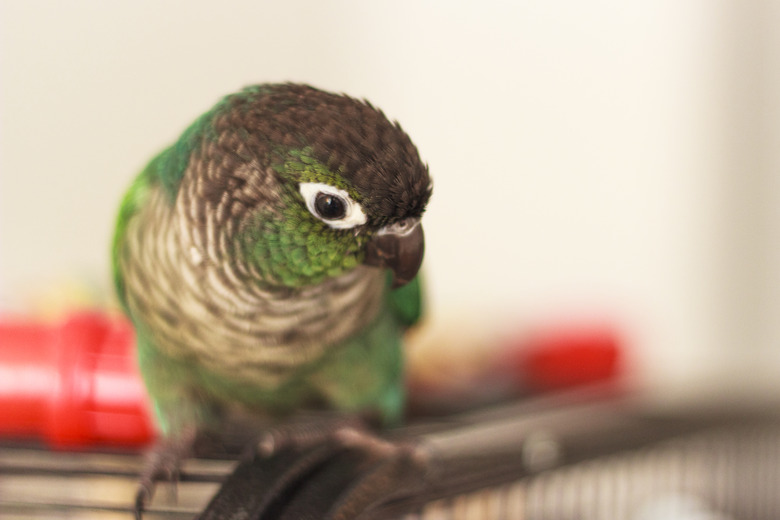How To Tell A Male Green-Cheeked Conure From A Female
The green-cheeked conure is one of the smaller conure types. As with many types of birds, it can be impossible to determine whether you have a male or female green-cheeked conure by visual inspection alone. However, your veterinarian can surgically determine the sex of your conure, or you can get a DNA test.
Male or female green-cheek conure
Male or female green-cheek conure
Physical differences alone are not sufficient to positively identify the sex of your green-cheeked conure, although some traits are more common in males than females and vice versa. Examine your green-cheeked conure's head and feet. Females tend to have rounded heads and pink feet. Males, on the other hand, tend to have flatter heads and gray toes.
The pelvis is also different, but this can be difficult to see visually. The pelvic bone of female birds tends to be more rounded and broader than a male's pelvic bone. Individuals with experience sexing birds may be able to feel the difference, but this is not recommended, as you risk injuring these small birds.
Green-cheeked conure breeding behavior
Green-cheeked conure breeding behavior
There are some breeding behaviors that may offer clues to the sex of your conure if you have a pair of breeding birds. Green-cheeked conures don't reach sexual maturity until they are between 1 and 3 years old. Obviously, only female birds will lay eggs. However, if you have more than one bird in the cage, you may not know which bird laid the egg. Both parents will take a turn at incubating the eggs, so that will not help you identify which bird is male and which is female.
Prior to mating, the male birds will puff up and lift their tail. They will then back into the female to show their interest. Female birds that accept the male will also lift their tail. Rather than backing up toward the male, she will wag her tail feathers toward the male.
Surgical sexing of birds
Surgical sexing of birds
Surgical sexing is a process in which your veterinarian will insert a laparoscope that allows your vet to visualize your bird's abdomen and internal organs. Your vet will be able to visually determine whether your bird has ovaries or testicles. If you plan to breed your birds, this method may be recommended, as your vet can check the health of your bird's reproductive organs. After the procedure, the vet will tattoo the bird's wing so that the sex of the bird is recorded.
There are significant risks with this procedure, however. Birds must be under anesthesia for the procedure. In addition, there is always a risk that the bird's organs will be damaged during the procedure. In addition, the ovaries and testicles are quite small, especially in young birds, so there is a possibility of error if the veterinarian is not highly experienced.
DNA testing for gender
DNA testing for gender
DNA testing to determine the sex of your green-cheeked conure is probably the best option. It is safer since the bird does not need to undergo surgery, and the results are 100 percent conclusive. Your vet can do the test with a feather or blood sample.
Alternatively, you can get an at-home test kit and do the test with a freshly plucked feather. This option has the added benefit of not having to transport your conure to the vet. The samples are sent to a laboratory and analyzed. The results will tell you whether your conure is male or female.
